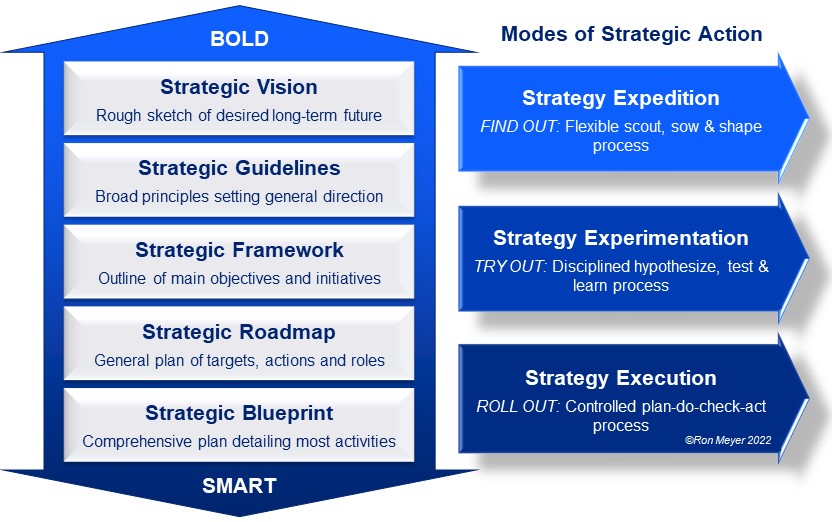A strategy is a course of action to achieve a particular purpose. An individual or organization has a strategy when they don’t behave in a random or ad hoc fashion, but there is a pattern in what they do and don’t do. Strategy is the logic in the actions as they move forward.
To realize a coherent pattern, strategic action needs to be guided by some deliberate choices made before getting underway. Such a plan of action can be very general and only sketch the ‘big picture’ (setting BOLD goals – broad, optimistic, long-term, and daring) or can be very detailed (setting SMART goals – specific, measurable, actionable, realistic, and time-bound).
The Strategic Action Modes framework outlines three different manners of moving forward in a strategic way, each requiring a different level of deliberate choices to be made upfront. The key message of this framework is that the archetypical approach called strategic planning – first formulate a blueprint and then move to execution – is not the only form of strategic action. Where detailed choices are hard to make in advance and then roll out, people can still move ahead by trying out and finding out. To be effective, strategists need to run a portfolio of actions (see model 10 – Strategic Agility Model), using all three complementary strategic action modes and formulating just enough beforehand to have sufficient direction for each action.

The five levels at which the intended strategy can be specified are the following: